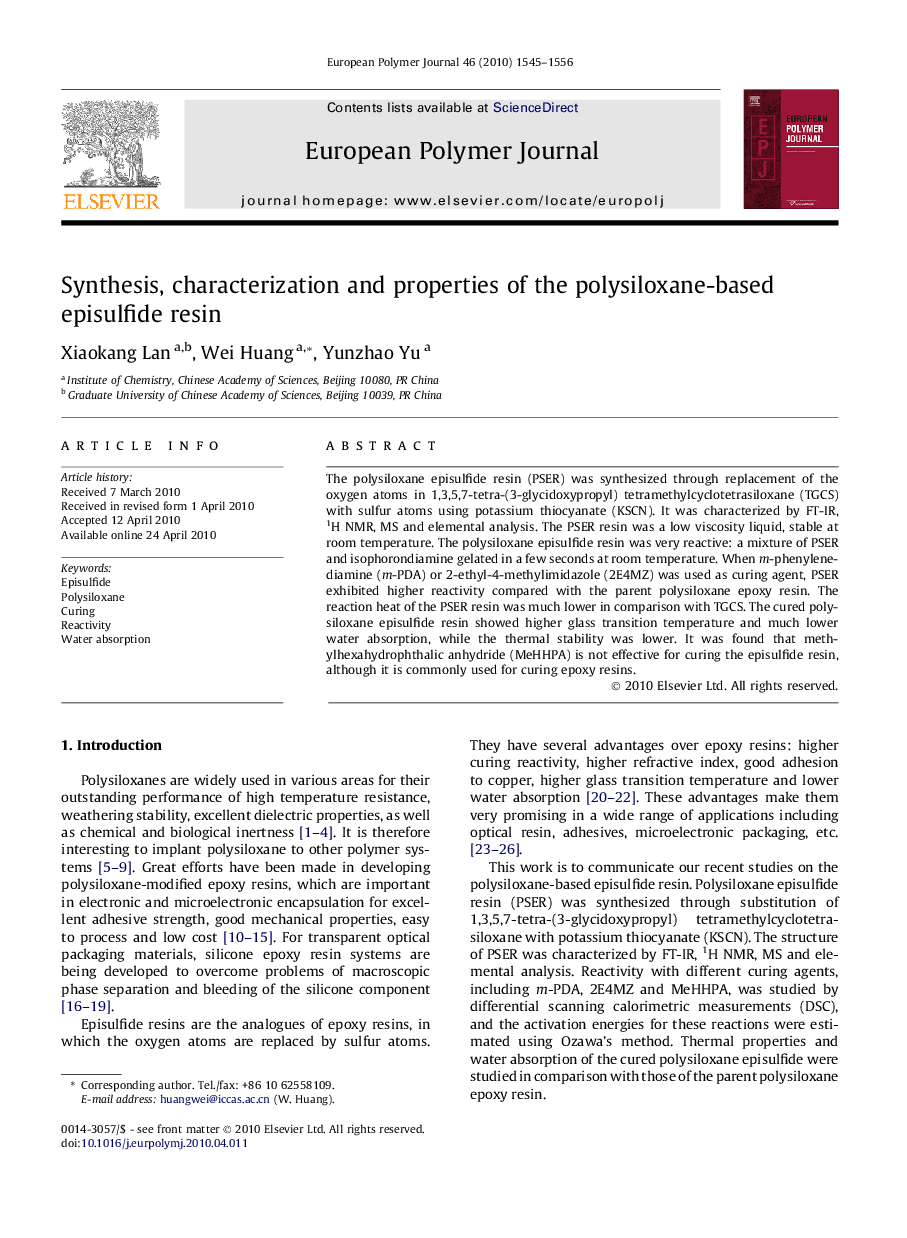| Article ID | Journal | Published Year | Pages | File Type |
|---|---|---|---|---|
| 1402244 | European Polymer Journal | 2010 | 12 Pages |
The polysiloxane episulfide resin (PSER) was synthesized through replacement of the oxygen atoms in 1,3,5,7-tetra-(3-glycidoxypropyl) tetramethylcyclotetrasiloxane (TGCS) with sulfur atoms using potassium thiocyanate (KSCN). It was characterized by FT-IR, 1H NMR, MS and elemental analysis. The PSER resin was a low viscosity liquid, stable at room temperature. The polysiloxane episulfide resin was very reactive: a mixture of PSER and isophorondiamine gelated in a few seconds at room temperature. When m-phenylenediamine (m-PDA) or 2-ethyl-4-methylimidazole (2E4MZ) was used as curing agent, PSER exhibited higher reactivity compared with the parent polysiloxane epoxy resin. The reaction heat of the PSER resin was much lower in comparison with TGCS. The cured polysiloxane episulfide resin showed higher glass transition temperature and much lower water absorption, while the thermal stability was lower. It was found that methylhexahydrophthalic anhydride (MeHHPA) is not effective for curing the episulfide resin, although it is commonly used for curing epoxy resins.
Graphical abstractFigure optionsDownload full-size imageDownload as PowerPoint slide
